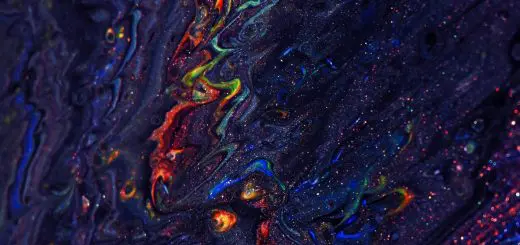Cerberus: The Guardian of the Underworld

Looking for more amazing products? Check out our online store and explore our collection here! Happy shopping!
Before diving in, please note: This post is for informational purposes only. If you’d like to know more about how we approach topics, feel free to check out our friendly Disclaimer Page.
Hey there, amazing readers! 
We’re committed to delivering quality posts, and your support (even just sticking around despite the ads) means everything to us. So, bear with us, and thanks for helping us keep the good vibes rolling. Now, on to the fun stuff!
TRANSLATE BUTTON AT THE END OF THE ARTICLE
A Quick Overview
Cerberus, the infamous three-headed dog of Greek mythology, has fascinated people for centuries.
This creature, often depicted as a fierce guardian of the Underworld, embodies a variety of themes ranging from loyalty to fear.
In this article, we will delve deep into the various aspects of Cerberus, exploring his origins, role in mythology, artistic representations, and enduring legacy.
Whether you’re a mythology buff or simply curious about this iconic figure, there’s plenty to discover!
The Mythical Origins of Cerberus Unveiled Today!
Cerberus has roots that stretch back to ancient Greek traditions.
His name derives from the Greek word "kerberos," which means "spotted." Depending on the myth, he’s described in various ways, but he’s best known for his three heads and his snake-like tail.
Some texts even suggest he had a mane made of serpents!
His parentage is as fascinating as he is.
Cerberus is often said to be the offspring of Typhon, a monstrous giant, and Echidna, a creature half-woman, half-snake.
This lineage certainly hints at his fearsome disposition.
In some stories, he is described as the child of the primordial deities, which adds to his significance in the pantheon of Greek mythology.
The myths often place Cerberus in the Underworld, serving as a guardian to prevent the dead from escaping and the living from entering without permission.
His role emphasizes boundaries—something that was particularly vital in ancient Greek culture, where the afterlife was a significant and often daunting concept.
For many, Cerberus symbolizes more than just a fearsome guard.
He represents the finality of death and the importance of respecting the laws that govern life and death.
Just imagine facing a three-headed dog that doesn’t take kindly to intruders!
It’s a reminder that some mysteries in life are meant to remain unsolved.
Meet Cerberus: The Three-Headed Canine Marvel
Let’s take a closer look at our canine friend.
Cerberus stands out with his three heads, each capable of barking and growling ferociously.
One head represents the past, another the present, and the third the future.
This might suggest that Cerberus embodies the entire scope of life and human experience.
His appearance varies depending on the artist or storyteller.
Some portray him with a ferocious demeanor, while others depict him with a softer, almost pitiable look.
The latter interpretation makes us ponder: is he simply doing what he was created to do, or is there more depth to his character?
Cerberus is also known for his loyalty.
Despite being a fierce guardian, he remains devoted to Hades, the god of the Underworld.
His fierce protection of the gates to the Underworld signifies unwavering dedication.
Imagine having such a devoted creature guarding your home—talk about having a loyal friend!
Interestingly, Cerberus isn’t just a symbol of fear.
Some stories showcase moments where he can be tamed or even befriended.
This duality makes Cerberus a layered character, one who evokes both terror and sympathy.
Cerberus: A Guardian with a Heart of Gold!
As a guardian, Cerberus has a complex personality.
While he may seem intimidating, he has moments that reveal a softer side.
Take, for instance, the myth of Heracles, who was tasked with capturing Cerberus as one of his Twelve Labors.
Instead of fighting or destroying him, Heracles approached Cerberus with a mix of respect and courage, showcasing that even the fiercest beings can be understood.
In some interpretations, Cerberus serves not just as a protector but as a guide for souls venturing into the afterlife.
This notion gives him a more compassionate role, suggesting that he helps ensure souls find their rightful place.
So, while he may bark and growl, he’s also looking out for those who have passed on.
This dual nature—fearsome yet protective—reflects the complexities of life itself.
We all have our fears and uncertainties, but there’s often a protective instinct that resides within us.
Cerberus exemplifies that balance beautifully.
The Role of Cerberus in Greek Mythology Explained
Cerberus isn’t just a dog; he plays a pivotal role in Greek myths, often embodying the themes of life, death, and the journey in between.
His primary job as the guardian of the Underworld is to keep the dead from escaping.
This highlights the ancient Greeks’ beliefs about the afterlife and the importance of respecting its boundaries.
In various myths, we see Cerberus interact with many heroes.
For example, in addition to Heracles, he appears in stories involving Orpheus, who charms the beast with music, allowing him to pass through the gates of the Underworld to retrieve his beloved Eurydice.
This interaction shows that even a creature like Cerberus can recognize and respond to compassion and artistry.
Cerberus also serves as a reminder of the inevitability of death.
His presence in the Underworld signifies that all must eventually face their mortality.
The Greeks believed that acknowledging and respecting this aspect of life was crucial for a virtuous existence.
By understanding Cerberus’s role, we gain insight into the collective psyche of ancient Greece.
They grappled with the unknowns of death and the afterlife, and having a figure like Cerberus helped them make sense of those fears.
Fun Facts About Cerberus: More Than Just a Guard Dog
Did you know that Cerberus had some companions?
Yes!
In certain myths, he was accompanied by other creatures, such as the multi-headed dragon, Ladon, and various shades of the dead.
Imagine a spooky little gang hanging out together in the Underworld!
Another fun fact: Cerberus is often depicted with the ability to breathe fire!
This adds an even more menacing layer to his character.
Who wouldn’t be a bit scared of a three-headed dog that could also scorch you with flames?
Talk about fierce!
Cerberus was said to have been able to understand human speech, making him not just a creature of instinct but also one capable of comprehension.
This opens up a whole new discussion about how we interact with animals and the potential they hold for understanding us.
Interestingly, in various depictions, Cerberus is shown with different numbers of heads.
Some accounts even suggest he could have up to fifty heads at one point!
This variation reflects the adaptability of myth and how different cultures interpret characters.
Cerberus also made quite a splash in the modern world.
You can find his likeness in various media, from video games to literature, showcasing that his appeal transcends time and culture.
Cerberus in Art: Depictions Through the Ages
Throughout history, artists have been captivated by Cerberus.
Ancient pottery and sculptures often portray him as a fierce beast, emphasizing his role as a guardian.
The Greeks loved to embellish their art with stories, and Cerberus was a captivating subject.
In Renaissance art, we see a shift in how Cerberus is depicted.
Artists began to explore his more tragic elements, portraying him as a misunderstood creature rather than a mere beast.
This evolution reflects the growing interest in emotional depth and character complexity in storytelling.
Fast forward to modern interpretations, and Cerberus appears in everything from comics to animated films.
Each new representation brings a unique twist to his character, showing how adaptable myths can be to contemporary narratives.
For example, in Dante Alighieri’s “Inferno,” Cerberus is portrayed as a gluttonous creature, guarding the gluttons in the third circle of Hell.
This artistic choice emphasizes not just his role as a guardian but also his connection to human flaws, making him a figure of moral significance.
Artistic depictions of Cerberus serve as a mirror to societal values and fears.
They capture the essence of what it means to guard boundaries while also reflecting the complexities of life, death, and everything in between.
How Cerberus Became a Symbol of Protection
Over time, Cerberus evolved into a symbol of protection, especially in modern contexts.
His fierce loyalty to Hades makes him an emblem of guardianship over life’s boundaries.
In a world where boundaries are often tested, Cerberus reminds us of the importance of protecting what we hold dear.
Imagine feeling safe in your home because you know someone is looking out for you.
Cerberus embodies that spirit.
He stands vigilant, ensuring that the gates of the Underworld remain secure.
As a symbol, Cerberus has been adopted in various cultures and contexts.
For example, some people use his image in tattoos to signify strength, loyalty, and the courage to face challenges.
Others see him as a protector, embodying the idea that some creatures, no matter how fearsome they appear, are there to keep us safe.
Cerberus also finds a place in discussions about mental health.
Just as he guards the Underworld, we often need to set up boundaries in our emotional lives.
Understanding our limitations and protecting our mental well-being is crucial, and Cerberus serves as a powerful reminder of the importance of these boundaries.
In literature, Cerberus continues to be a popular symbol.
He often represents the challenges we face in protecting our inner selves and the struggles we must overcome to achieve peace.
The Hades Connection: Cerberus and the Afterlife
Cerberus’s relationship with Hades is pivotal in understanding his role in mythology.
As the guardian of the Underworld, Cerberus facilitates the flow between life and death.
He ensures that the souls entering the Underworld do so peacefully, while keeping the living at bay.
Hades, often portrayed as a stern figure, relies on Cerberus to maintain order.
Their relationship reflects how even the most fearsome creatures can have a purpose and a profound connection with those they serve.
It’s a partnership built on respect and duty.
One interesting aspect is that Cerberus is often viewed as a bridge between realms.
He helps souls transition smoothly, reminding us that death is not the end but rather a continuation of a journey.
In that sense, he embodies the idea of transformation, which resonates with many beliefs across cultures.
Cerberus is also featured in various myths where he interacts with famous heroes.
These encounters reveal deeper truths about life, courage, and the struggles we face as we navigate our own journeys.
He’s more than just a gatekeeper; he’s a facilitator of understanding.
Ultimately, Cerberus serves as a reminder of the mysteries of the afterlife.
His presence evokes curiosity and respect for the unknown.
He transforms the daunting nature of death into something that can be navigated with courage.
Cerberus: Friend or Foe? Understanding His Nature
Cerberus is often portrayed as a fearsome creature, but is he truly a foe?
The answer isn’t so simple.
In various myths, he serves both as an obstacle and as a protector.
This duality makes him a fascinating subject to explore.
When Heracles approaches Cerberus, he doesn’t confront him with weapons.
Instead, he uses respect and courage to capture him.
This suggests that even the most intimidating figures can be approached with understanding.
It’s a powerful lesson in empathy!
Cerberus’s interactions with other characters reveal that he may not be purely hostile.
In some tales, he exhibits moments of vulnerability.
This complexity mirrors our own experiences; sometimes, those we perceive as adversaries may just need compassion.
In modern contexts, Cerberus has been viewed through various lenses.
Some people see him as a protective figure, while others view him as a representation of fear.
This duality keeps the conversation alive, allowing for different interpretations and meanings.
Ultimately, whether seen as friend or foe, Cerberus embodies the importance of understanding motivations.
His character reminds us that the lines between heroism and villainy can often blur, reflecting the complexities of human nature.
Cerberus in Popular Culture: Movies and Literature
Cerberus has leaped from ancient mythology into the realm of popular culture with gusto.
You can find this three-headed canine guardian in movies, literature, and even video games.
His fierce image has cemented him as a staple in fantasy and horror genres.
In film, Cerberus has appeared in adaptations of mythology, often depicted as the ultimate guardian.
In the “Harry Potter” series, for example, a creature named Fluffy serves as a nod to Cerberus, guarding the entrance to the Philosopher’s Stone.
It’s fascinating to see how myth has inspired such creative storytelling!
In literature, Cerberus pops up in works from Dante’s “Inferno” to Rick Riordan’s “Percy Jackson” series.
Each interpretation brings a new flavor to his character, demonstrating how myths can adapt to contemporary themes.
Video games have also embraced Cerberus.
Titles like “Hades” and “God of War” feature him as both a formidable enemy and a nuanced character.
This shows how our interpretations of myth can evolve, keeping the story relevant for new generations.
Comics and graphic novels have also drawn on Cerberus’s rich symbolism.
He represents fears, challenges, and the complexities of guarding one’s territory.
These modern retellings keep the spirit of the myth alive while exploring new themes.
Cerberus continues to inspire creators, philosophers, and thinkers alike.
His journey from ancient mythology to modern storytelling showcases the timelessness of these tales.
Lessons from Cerberus: Loyalty and Duty Explored
Cerberus embodies loyalty in a profound way.
His steadfastness in guarding the gates of the Underworld illustrates the importance of duty.
He’s a loyal companion to Hades, reminding us of the power of commitment.
In our daily lives, we encounter situations that test our loyalty.
Cerberus teaches us that being loyal can manifest in various ways.
It could be supporting friends, standing by family, or even remaining true to oneself.
His dedication serves as an example we can all learn from.
The idea of protecting boundaries is also significant.
Just as Cerberus safeguards the Underworld, we must protect our personal boundaries.
This lesson resonates in a world where boundaries are often challenged.
Cerberus also urges us to confront our fears.
While he may be intimidating, his role as a guardian shows that facing what scares us can lead to growth.
By embracing challenges, we can transform fear into strength.
Finally, Cerberus reminds us of the importance of balance.
The duality of his nature—both fearsome and protective—illustrates the complexities of life.
Embracing these aspects can lead to a richer understanding of ourselves and those around us.
Celebrating Cerberus: His Legacy in Modern Times
Cerberus’s legacy is alive and well in modern culture.
From movies to tattoos, he remains a symbol of complexity, loyalty, and strength.
As we celebrate this iconic figure, we should reflect on what he represents in our lives.
Many people find inspiration in Cerberus’s loyalty.
His role as a guardian resonates with those who value protection and dedication.
When we think of Cerberus, we think of the bonds that hold us together, be it with friends, family, or even our pets!
Moreover, Cerberus invites us to explore our fears.
By understanding his character, we can confront our apprehensions head-on.
His presence reminds us that it’s okay to be both strong and vulnerable.
As we share stories about Cerberus, we keep the myths alive.
These tales connect us to our history while reminding us of timeless themes.
They encourage us to ponder our own journeys, fears, and allegiances.
In conclusion, Cerberus is more than just a three-headed dog; he is a symbol of loyalty, complexity, and protection.
As we navigate our lives, let’s carry a piece of Cerberus with us—a reminder to face our fears, protect our boundaries, and remain loyal to those who matter.
Conclusion
Cerberus, the guardian of the Underworld, is a multifaceted character steeped in mythology, art, and modern culture.
From his fierce loyalty to his complex nature, he captivates our imagination and invites us to explore deeper themes of life, death, and the relationships that bind us.
As we delve into the stories surrounding him, we learn valuable lessons on loyalty, duty, and understanding—insights that resonate even in our contemporary lives.
So, the next time you hear the name Cerberus, remember that he stands not just as a fearsome guardian, but as a symbol of the complexities that make life rich and meaningful.

The Enlightenment Journey is a remarkable collection of writings authored by a distinguished group of experts in the fields of spirituality, new age, and esoteric knowledge.
This anthology features a diverse assembly of well-experienced authors who bring their profound insights and credible perspectives to the forefront.
Each contributor possesses a wealth of knowledge and wisdom, making them authorities in their respective domains.
Together, they offer readers a transformative journey into the realms of spiritual growth, self-discovery, and esoteric enlightenment.
The Enlightenment Journey is a testament to the collective expertise of these luminaries, providing readers with a rich tapestry of ideas and information to illuminate their spiritual path.
Our Diverse Expertise
While our primary focus is on spirituality and esotericism, we are equally passionate about exploring a wide range of other topics and niches 

To ensure we provide the most accurate and valuable insights, we collaborate with trusted experts in their respective domains 
Our blog originally focused on spirituality and metaphysics, but we’ve since expanded to cover a wide range of niches. Don’t worry—we continue to publish a lot of articles on spirituality! Frequently visit our blog to explore our diverse content and stay tuned for more insightful reads.
Hey there, amazing reader! 
Check out our store here and take a peek at some of our featured products below! Thanks for being awesome!












